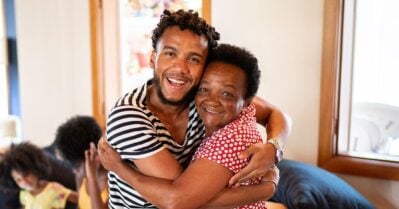Baltimore Families Struggle to Access Affordable and Quality Child Care

In Baltimore, too many families face steep barriers to early childhood education — from high costs to limited availability. As a result, young children are missing out on early learning experiences that are important for school readiness and long-term success.
A new landscape analysis commissioned by the Baltimore City Early Childhood Advisory Council (ECAC) reveals longstanding challenges in early care and education. Developed in partnership with the Prenatal to Five Impact Collaborative at the Maryland Philanthropy Network, this is the first in a series of reports on childhood experiences.
“Every parent wants to give their child the best start in life,” said Yolanda Jenkins, coalition coordinator of the Baltimore City ECAC and director of early childhood initiatives at Family League of Baltimore. “The earliest years are the most critical, and the longer we delay prioritizing the system, the more we risk our children’s future. Our coalition is committed to working with city and state leaders, providers and families to close these gaps and build a stronger, more equitable system that supports every child from the start.”
Key Findings on Early Learning Access and Affordability
The report highlights several challenges for children and families in Baltimore:
- Not enough licensed seats for young children. Programs serve just 20% of infants and only half of children younger than age 5. In some neighborhoods — such as Brooklyn/Curtis Bay, Morrell Park and parts of northeast Baltimore — capacity is below 30%.
- Pre‑K enrollment gaps. About 65% of 4‑year-olds attend public pre‑K, but fewer than 10% of eligible 3‑year-olds are enrolled. Although the Blueprint for Maryland’s Future sets a goal for half of pre‑K seats to be in private or community-based settings, just 8% in Baltimore meet that mark.
- Costs exceed affordability benchmarks. A family earning the city’s median income spends more than 30% on child care, far above the federal affordability benchmark of 7%.
- Lack of full-day care. While 64% of children in Baltimore live in households where all parents work, only 36% have access to care that covers a full workday.
Consequences of Baltimore’s Inadequate System
The report underscores the importance of early education for kindergarten readiness:
- Children in formal care are more prepared. In the 2024–2025 school year, 45% of kindergartners demonstrated readiness. That rate climbed to 52% for those who attended a Baltimore City Public Schools pre‑K program.
- Multilingual learners and children with special needs lag behind their peers and often live in neighborhoods with fewer high-quality options.
- Families lack access to information about where care is available, how many seats are open or how programs perform.
- Staffing shortages driven by low wages and high turnover limit availability, especially in Head Start programs, which serve just 55% of eligible preschoolers and 5% of infants and toddlers.
- Quality concerns. Seventy-five percent of Baltimore child care providers are rated at or above Level 3 in the state’s quality rating system — not rated at all. While rating guides public funding, ECAC members caution that ratings don’t necessarily reflect school readiness outcomes.
Next Steps
In response to these findings, the ECAC is calling on public agencies, policymakers and community partners to take action. They recommend:
- Sustaining public funding through child care scholarships and pre‑K expansion under the Blueprint for Maryland’s Future.
- Expand mixed-delivery pre‑K, especially in underserved neighborhoods.
- Improve outreach to families with multilingual learners, children with special needs and those not in formal care.
- Build stronger data systems to better track availability, enrollment and well-being across child care settings.
Learn more about efforts to expand access to child care in Baltimore






